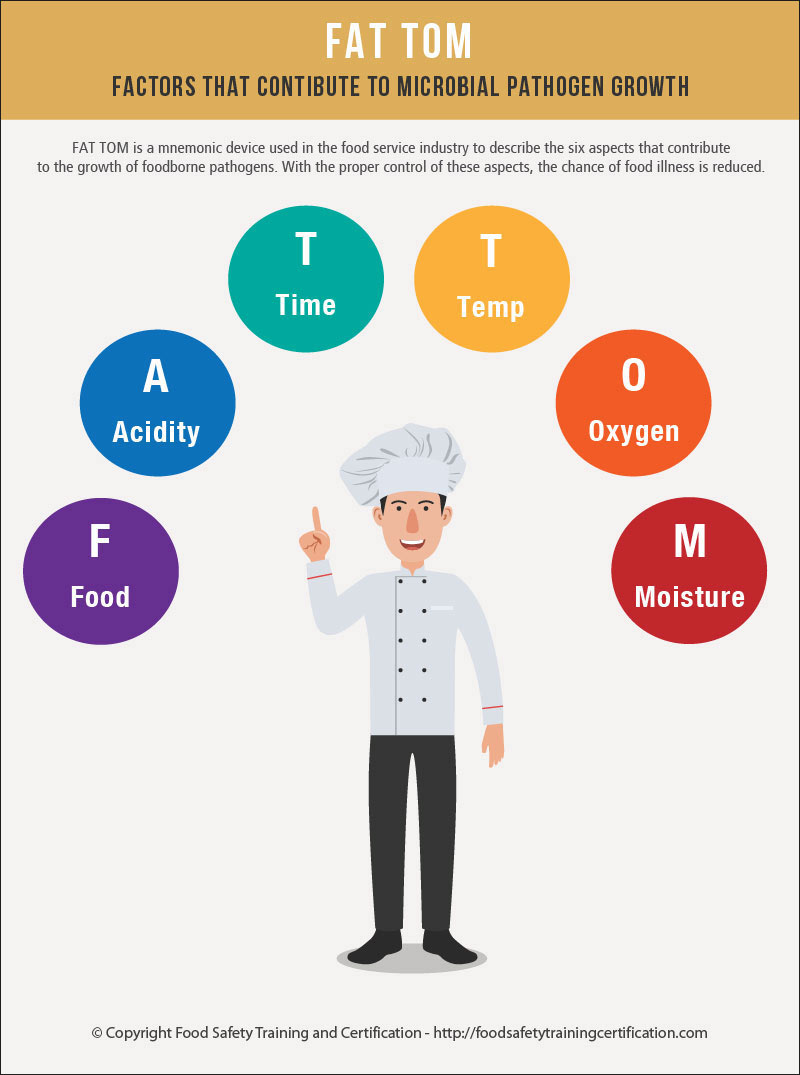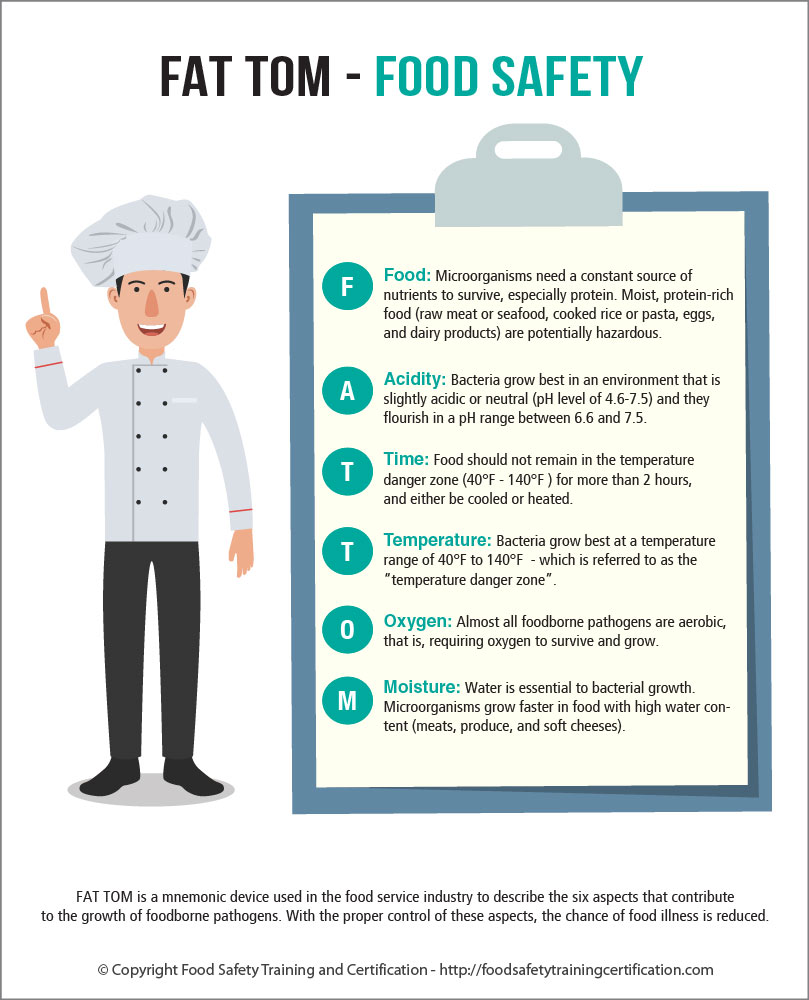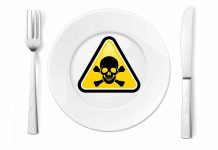FAT TOM is a mnemonic device used in the food service industry to describe the six favorable conditions required for the growth of foodborne pathogens.
Although bacteria are good at adapting to their environments, certain conditions promote bacterial growth more than others. These conditions include food type, acidity, time, temperature, oxygen, and moisture.
Understanding the optimal conditions for bacterial growth can potentially help you reduce your risk for bacterial infections and food poisoning.

F – Food
Microorganisms need a constant source of nutrients to survive, especially protein. Moist, protein-rich food (raw meat or seafood, cooked rice or pasta, eggs, and dairy products) are potentially hazardous and are considered high-risk foods.
- Learn about cross contamination, cold and hot food safety, best practices for personal hygiene, and foodborne illnesses.
- Food Manager ANSI Certification: SALE $99.00 - Valid in all States
- Food Handler ANSI Training for only $7.00!
- 10% OFF SALE: Enter Promo "TRAIN10OFF" at Checkout
A – Acidity
The degree of acidity or alkalinity (base) of a substance is measured by its pH. pH is measured on a scale from 0 to 14.0. An environment with a pH of 7.0 is exactly neutral. Foods with a pH below 7.0 are acidic; a pH above 7.0 is alkaline.
Bacteria grow best in an environment that is slightly acidic or neutral (pH level of 4.6-7.5) and they flourish in a pH range between 6.6 and 7.5.
Most bacteria will not grow at pH levels below 4.6 because the environment is too acidic. Thus, acidic foods, like vinegar and fresh fruits (especially citrus), seldom provide a favorable climate for pathogenic bacteria.
The Food and Drug Administration’s (FDA) regulations for acid/acidified foods require that the food be brought to pH 4.5 or below.
T – Time
When low acid and high protein available foods are left out too long at room temperature can cause bacteria to grow to dangerous levels that can cause illness.
Food should not remain in the temperature danger zone (40°F – 140°F ) for more than 2 hours, and either be cooled or heated. If the temperature is above 90°F, food should not be left out more than 1 hour.
T – Temperature
Bacteria grow best at a temperature range of 40°F to 140°F – which is referred to as the “temperature danger zone”.
Important rules of food safety are to not leave food at room temperature for too long and store foods at the correct temperature.
O – Oxygen
Almost all foodborne pathogens are aerobic, that is, requiring oxygen to survive and grow.
A few microorganisms grow only in anaerobic conditions (in the absence of oxygen). Botulism, a rare type of foodborne illness, is caused by a specific type of bacteria called clostridium botulism that grows only in anaerobic conditions.
M – Moisture
Water is essential for the growth of microorganisms. Perishability of a food is related to the moisture content, and the water activity level.
Moisture content is the amount of water in food expressed as a percentage. Water activity (aw) is the amount of water available for use and is measured on a scale of 0 to 1.0.
Bacteria, yeast, and molds multiply rapidly with a high water activity level, above 0.86. Meats, produce, and soft cheeses are examples of foods with aw in this range (between 0.86 and 1.0).
Foods preserved with salt or sugar, such as beef jerky or jams and jellies have a lower aw because salt and sugar deprive microorganisms of water and inhibit their reproduction. These products are shelf-stable (i.e. they do not need refrigeration, unless opened).
Pathogenic bacteria have difficulty growing in foods such as dry noodles, flours, candies and crackers, where aw is below 0.85. FDA regulations for canned foods require aw of 0.85 or below.
FAT TOM Food Safety Infographics




























